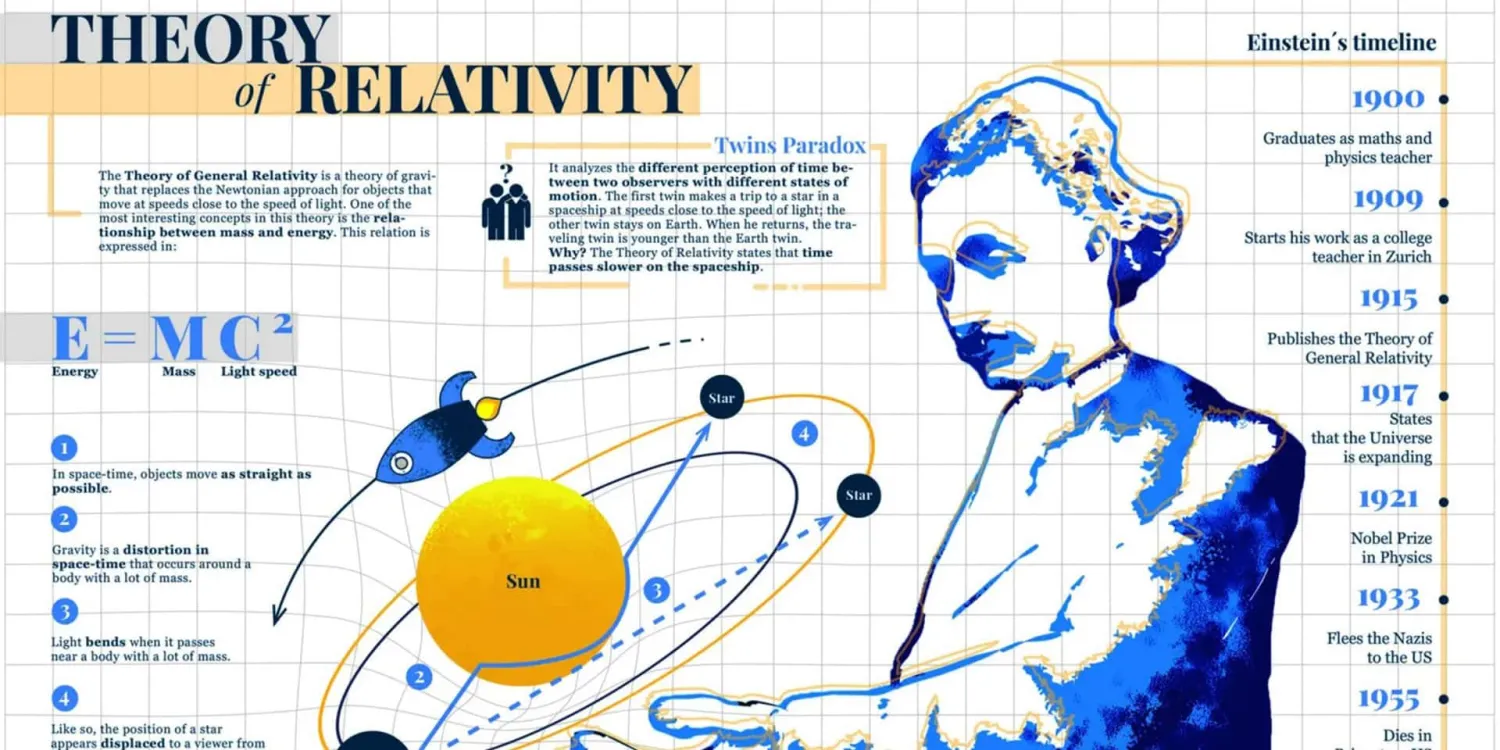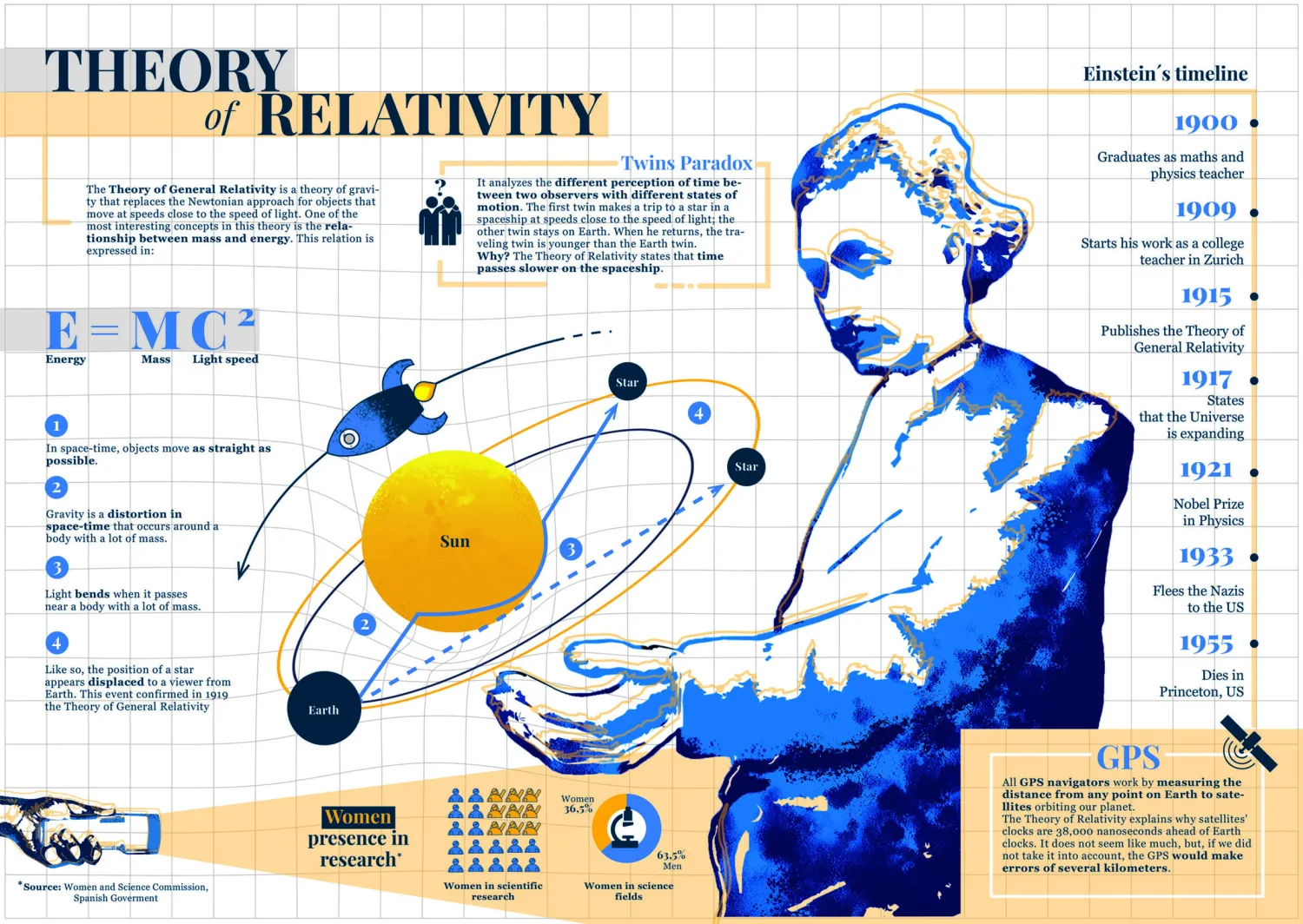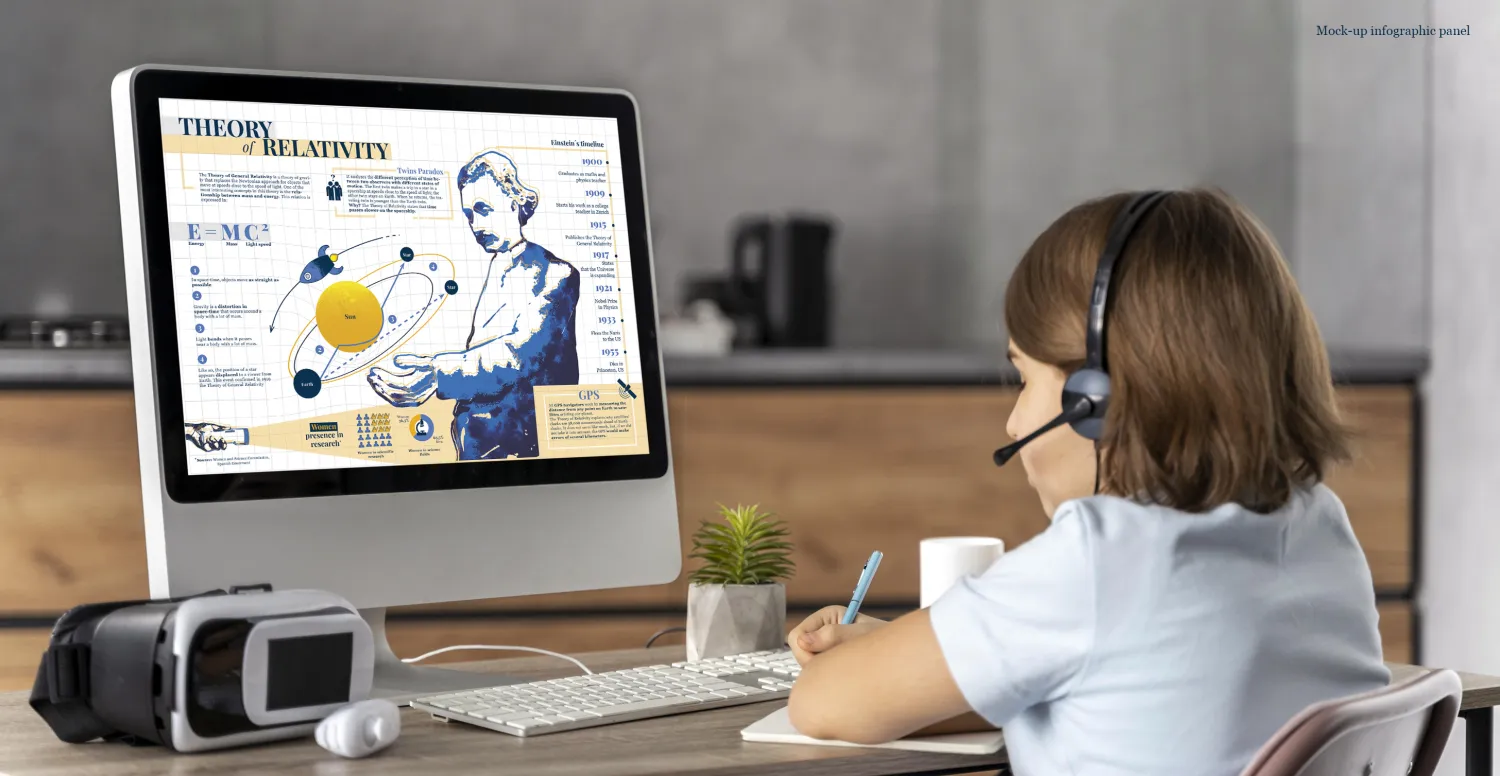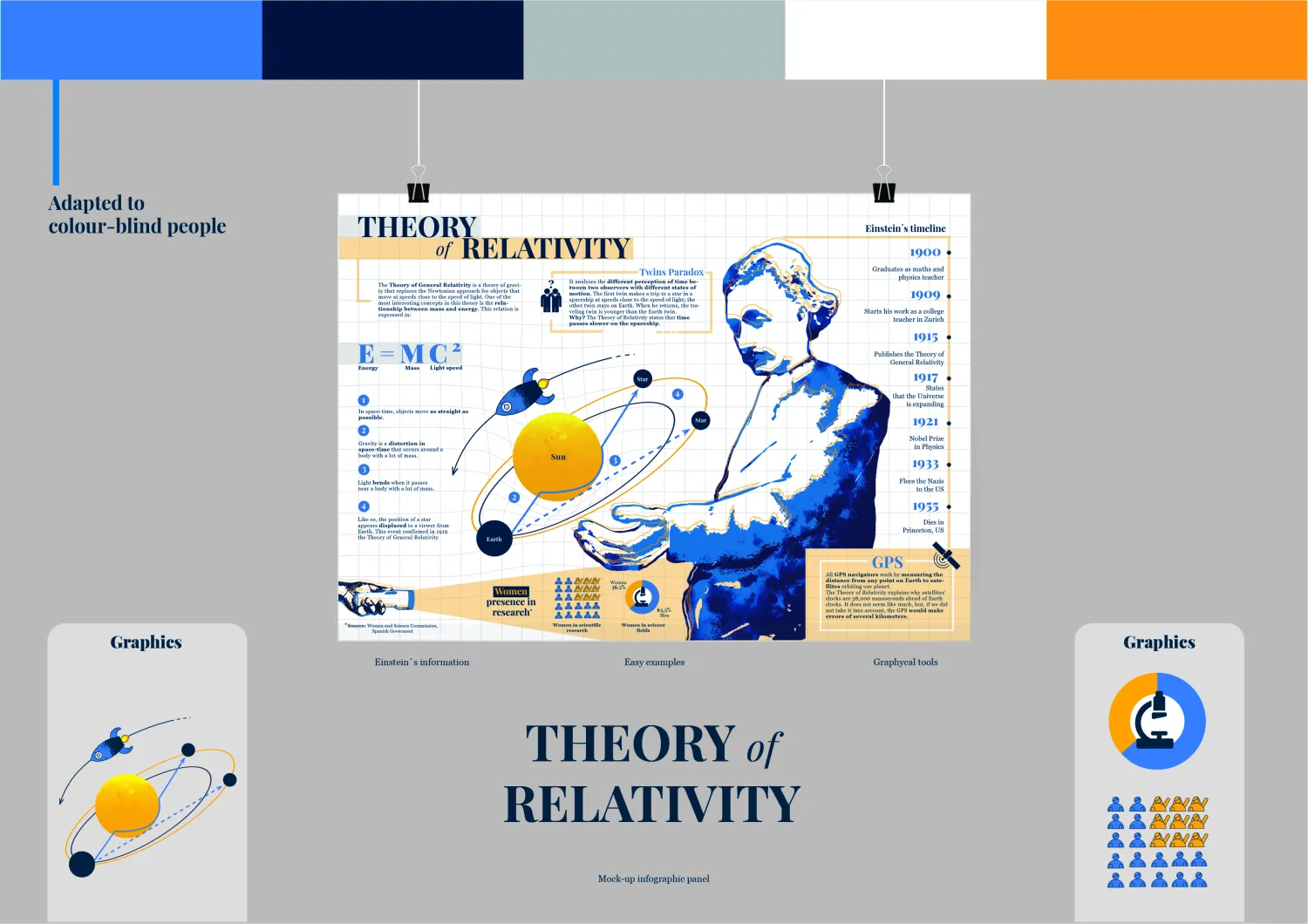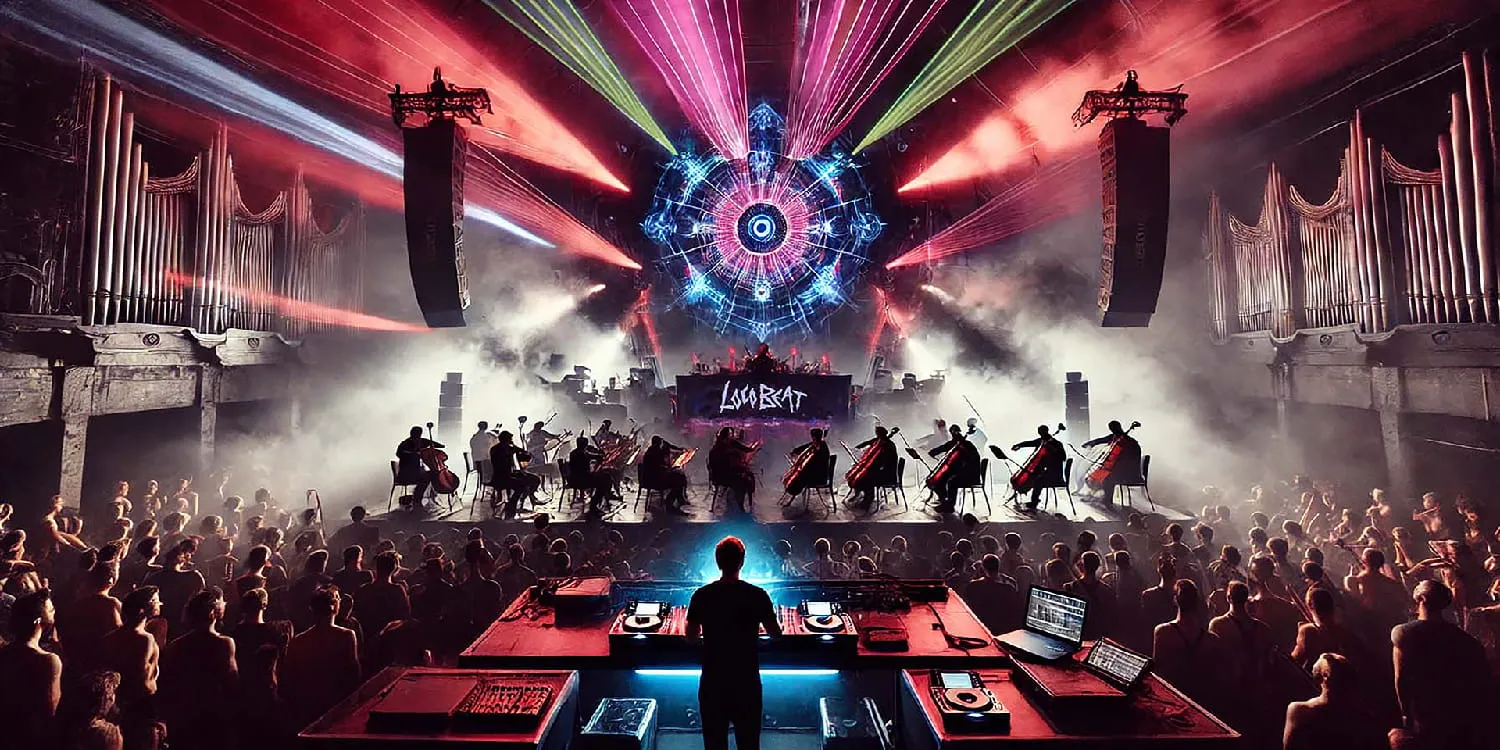This project consists of developing a graphic solution that simplifies information through graphic tools, diagrams and illustrations, summarized in an infographic. The theme is free, however, the final result must be adjusted to a minority of our choice and their specific needs aiming at inclusion.
An infographic is a graphic discipline that figuratively explains a complex subject, making it simple and visual. It captures the viewers' attention and leads them to easily understand something that at first would be tedious to explain.
After an analysis of the requirements of the project, we came to the idea of focusing the theme on the Theory of Relativity and the importance it has in modern science and even in our daily lives. The chosen minority are children and teenagers between 11 and 16 years old who may be color blind. The aim of this project is to bring science closer to this audience and to instill interest in them in a captivating and entertaining way.
Why the Theory of Relativity?
The process followed to arrive at this idea began with a brainstorming session. Here the term "complex" was related to "science" because of the general thinking that science is difficult and boring. We pursued the idea of proving that point wrong and showing how fascinating science can be, even for young people.
Apart from this main point, other reasons are:
- To make this field of knowledge accessible to girls and young women.
- To make infographics suitable for colorblind children and help them throughout their education.
- To show statistics and graphs that support this proposal.
- Teach the basics of the Theory of Relativity and how it is important today.
- To integrate design into science as an outreach tool.
The information and statistics presented are:
- The contribution of this theory in the development of GPS. The aim of this example is that children can associate their daily life to complex scientific terms and realize how necessary they are.
- The number of active researchers in Spain and the percentage of them who are women. The presence of women in science is almost a taboo subject, so let's try to break this stereotype.
- Examples that explain relativity in a simple way: The twin paradox and the deformation of space that affects the position of stars.
- Timeline of Einstein's achievements and awards.
Colors
The main color is azure blue, a bright shade of blue. This color is combined with a dark navy blue, as it adds depth to the set and is a perfect substitute for traditional black.
Highlights and graphic tools will be in a bright orange shade, which is the exact complementary shade to azure. Finally, text and details will be in white and light gray to make them more legible and contrasting.
Aesthetics
The inspiration for the aesthetics of this project is found in the work of Herbert Bayer, especially in the publication of the CCA World Geographic Atlas in 1953. We take as an example Bayer's treatment of the image in the maps of the World Geographic Atlas and his graphic synthesis of complex information.
